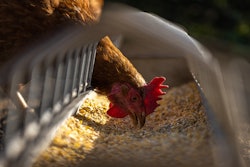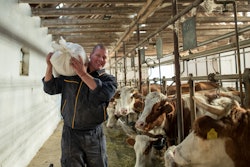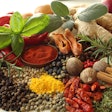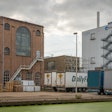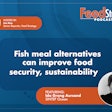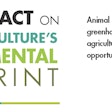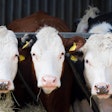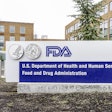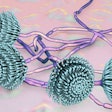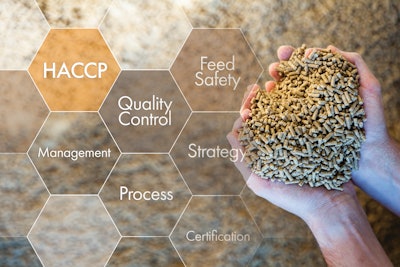
The production of safe feed has been an industry cornerstone for decades.
“三十年前,几乎没有意识阿布t feed safety, no awareness about the industry's responsibility for it, and now there is a shift of the mindset — a paradigm shift, you could say — as more and more companies worldwide realize they have a responsibility for feed safety and they have to act on it,” says Johan den Hartog, recently retired managing director ofGMP+ International.
Today, animal feed is very safe because the industry steadfastly continues to focus on formal safety training and standards, feed ingredient quality throughout the supply chain, and the overall health and welfare of poultry and livestock.
The future of animal feed safety holds tremendous potential as advancements in technology and downstream demands pave the way for transformative changes. As a result, the next “paradigm shift” will result in a more robust and secure global feed system, further strengthening customer relations, consumer trust and profitable animal production.
Here are the top four trends set to influence feed safety and hazard prevention:
1. Climate change
Extreme weather driven by climate change threatens the cost and availability of feedstuffs, and introduces increased mycotoxin risks, spawned by wet conditions, excessive heat and drought.
To reduce mycotoxin exposure, monitoring is the first line of defense.
“Monitoring the weather conditions in the most important regions of supply, monitoring samples and by testing raw materials in the early states — maybe before the harvest occurs," den Hartog says.
Of course, sustainability is another important element of this discussion, as efforts across all industries aim to reduce emissions and other environmentally detrimental practices in hopes of curbing global warming. In the agrifood space, the development of new technologies will improve energy efficiency, minimize waste and utilize renewable energy sources.
2. New technologies
Emerging innovations and the enhancement of existing technologies will optimize feed safety monitoring and management, with the potential to elevate traceability, enable rapid contaminant detection, improve quality control and promote transparency in the future.
David Fairfield, senior vice president of feed at theNational Grain & Feed Association (NGFA), and den Hartog provided the following examples:
- Digital monitoring of the production line, i.e. a combination of sensors and machine learning, will enable actionable data collection from the manufacturing process.
- Artificial intelligence will enable the creation of predictive learning and predictive models, i.e. using weather perimeters to predict the possibility of increased levels of mycotoxins in certain areas of origin.
- 可跟踪性和区块链提供供应链visibility and the ability to ensure raw material quality and risk; it also offers traceable visibility inside the feed mill and the company.
- Implementation of automated batching control systems, incorporating micro-scaling technology, play a vital role in guaranteeing precise weighing accuracy, the utilization of intended ingredients, and the generation of comprehensive records. In instances where micro-scaling may not be practical, barcoding and/or RFID technology, along with hardware controls, are leveraged to validate the identity of appropriate ingredients and their correct utilization. Both approaches effectively mitigate the potential for nutrient imbalances in feed formulations.
- Rapid testing methods will increase the possibility to test more frequently at a lower cost in the early phases and throughout production.
- Advancements in automated cleaning systems on the production line — and a growing focus on technology, equipment, and processes that offer point-in-time interventions —will minimize the risk of contamination. Post-processing chemical treatments possessing residual properties and extended protection have also emerged.
3. Consumer awareness, demand
Feed safety is common practice in developed markets — especially if they export products to customers abroad — but den Hartog reports that safety protocols are not always standard in some Asian, Latin American and Southern European countries.
“I expect in the future [increasingly] in these parts of the world, feed safety will become more important for domestic markets — from the governmental side, but also from the retail side, where feed safety is a common issue,” he says.
As incomes rise in regions with lax protocols, consumers will become more critical of food safety measures and demand it in those domestic markets.
"If food safety is guaranteed in a country, then you will see that the focus will also shift to feed safety," says Roland van der Post, GMP+ International's new managing director. "Caring for the well-being of the animals, in the end, is caring for the well-being of the consumers."
4. Adoption of a ‘food safety culture’
More feed manufacturers have embraced the creation and fostering of a “food safety culture,” where everyone in the company and at the individual facilities is aware of the importance of feed safety, knows their specific role and ensures safety standards are upheld.
Fairfield believes feed producers will increasingly be called on to demonstrate their company has a strong commitment to a positive food safety culture.
“Both regulatory authorities and value chain partners are increasingly looking for how companies influence and support the beliefs, attitudes and the behaviors of people within their organizations to ensure feed safety,” he explains.
Van der Post stresses that the successful adoption of a safety-centric corporate culture starts at the top.
“If you want to really incorporate [safety] into the DNA of your company, the CEO should also know about feed safety,” says van der Post. “Yes, it has to do with food safety and such, but also for the continuity of your business. You cannot afford a mistake, not only for the animals and your customers, but also for your reputation. I always believe the CEO should lead by example and show their people that they mean business.”
Paul Davis,American Feed Industry Association’s (AFIA)director of quality, animal food safety and education, suggests management commits to regular safety training and related procedures for multiple employees so knowledge is retained despite attrition and “the training is top-of-mind when troubleshooting and finding solutions to new scenarios.”
Den Hartog agrees: “There is a growing need for the dissemination of knowledge about feed safety. Employees know of it, but not how or why to implement it. It's important not only for mill managers, but also for all people, at all levels in the company.”
Meanwhile, more facilities are usingsystematic hazard analysisto create their feed safety plans, Fairfield reports. Here, the risk management process evaluates how hazardous incidents can occur, the potential frequency, and the severity of the harm. Then, appropriate practices and procedures are implemented to control those hazards.
“A robust hazard analysis process is the most important component of an effective feed safety plan,” he concludes.
Current threats to feed safety
Mycotoxins
Mycotoxins pose a substantial threat to the safety of animal and human food. While safety concerns regarding mycotoxins are not new, the shifting weather patterns emphasize the need for continuous assessment of this risk.
Testing, monitoring and feed additives are advisable measures to mitigate the risks associated with mycotoxins.
Human error and equipment failure
Feed mill operators bear the responsibility of minimizing the potential for employee errors and equipment malfunctions.
According to Fairfield, most safety incidents in livestock feed relate to nutrient imbalances and drug contamination.
“Potential causes for either type of situation include formulation issues, human error, equipment design or malfunction, and inadequate supplier controls,” he said, noting that a facility’s feed safety plan needs to consider and address potential nutrient imbalances associated with their type of facility and animal feed being produced.
Ingredient availability, quality
The pandemic and war in Ukraine exposed the reality that feed producers cannot always rely on the stability of supply chains or imported raw materials.
“When you have a regular supplier with a clear control system, you can rely on [the integrity of the product], but when companies look for other sources and buy from lesser-known suppliers, it can result in more risk,” says den Hartog.
To reduce dependency on one or two suppliers, seek out additional reputable suppliers to regularly work with to reduce the risk of disruptions and ensure the quality of the purchase.
Also, as feed producers proactively seek out and purchase sustainable raw materials and feed additives—i.e. less carbon footprint, land use, deforestation—sourcing from new suppliers in new locations requires safety assessment, van der Post says.
Viral disease transmission
Feed can act as a fomite for the transmission of viral animal diseases, such as African swine fever (ASF) and porcine epidemic diarrhea (PED) viruses.
Research is actively underway to investigate the potential spread of viral diseases via animal feed, but more information is needed to comprehensively understand the associated risks and develop effective control measures, Fairfield notes.
U.S. regulators, for example, do not expect feed manufacturers to address whether feed is a “known or reasonably foreseeable” route of virus transmission; however, “scientific advances may change perspectives and industry practices related to this issue,” he says.
Pathogen exposure
There is a rising interest in the management of pathogenic bacteria in feed and pet food. In addition to the impact on animal health, the presence of microbes at different stages of feed/food production and distribution can significantly impact the safety of animal-derived products and contribute to human foodborne illnesses.
Potential avenues for contamination by pathogenic bacteria include raw materials, ingredients, personnel and the surrounding operating environment.





